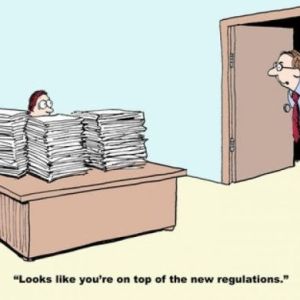In 12 short months, Australia has been put into an inflation (or wage-price) spiral. What is it? What is causing it? And how do we stop being spun off track?
An inflation spiral is the cause-and-effect relationship where rising wages increases the price of goods and services, increasing both the cost base and potentially the demand for the product. The price therefore rises, increasing the demand for higher wages, putting further upward pressure on prices causing a conceptual spiral.
For about a decade, Australia has had low inflation, meaning that the cost of goods and services has been increasing at about 1.5% per year. Wages meanwhile had been growing at a seemingly low 2.2% on average. However, as wages were growing faster than the cost of goods, we were getting richer to the tune of 0.7%. Whilst not a staggeringly impressive figure, this wealth was roughly matched by the improvements in productivity, which meant that businesses could afford to increase pays.
When inflation is rising, a simplistic approach is to increase wages in line with inflation, which is what the Fair Work Commission has just done, making the Government claim that they have increased the award wage by a record 5.75% (let’s say 6%). Official Inflation for the past year however has been about 8% (which doesn’t include Power and many Government costs that have increased even more), so the real purchasing power for people has actually dropped by about 2% (compared to small increases of about 0.7% in real buying power in recent years). But it gets worse.
80% of Australian’s work in service industries, that is, the cost of their labour is proportional to the price of the services they provide. In many cases, it is hard to find productivity improvements where the charge out rate is based on a per hour rate, and for instance a hair dresser can’t cut more hair faster. So increased pays will flow through to higher prices even more in Australia than it would if we had a higher proportion of people producing products. This is why it is so important to support mining, agriculture, construction and manufacturing. Due to strong exports, companies in those industries are likely to be less exposed to the immediate impacts of the slowing economy.
Whilst some businesses paying or tied to award rates will be required to increase wages by 6%, what many people don’t understand is that the business needs to increase their prices by about 8% to offset the cost. The business must pay GST on the higher sales price, more workers compensation, superannuation (which also gets a further 0.5% increase on 1st of July), payroll tax and other costs (note: these costs are all Government taxes, it’s not profit to the business). The employee soon realises that the celebrated 6% pay rise is in fact something like 4.2% because the employee has to pay income tax on it. When the employee then goes to spend their 4.2% pay rise, they discover that prices have gone up by 8%, in fact making them worse off than in the past.
Many look to the Reserve Bank (RBA) to control inflation, but they have only one lever to pull: adjust interest rates. This is a very blunt tool, because it penalises mainly middle class working households and businesses with a mortgage, and also increases Government debt costs. The RBA has made it clear that the recent interest rate rises were done to counter the inflationary wage rises and to reign in particularly Government spending, because both these increases have not been countered by productivity improvements to make them viable.
So how do we stop the spiral? The solution is actually simple, but unlikely to happen. Government needs to cut spending and stop this nonsense of nobody being worse off by trying to “compensate” mainly welfare recipients. Excessive spending, especially using borrowed money, needs to be repaid at some point. Taking money from one person to give to another who doesn’t work for it does not generate any wealth.
In the March quarter, productivity declined by 4.6%, the biggest drop in productivity in our history. There are industrial relations policies that are yet to take effect, which will all further decrease productivity.
What needs to happen is that we (both employees and businesses) need to look beyond the glossy slogans and start speaking out about the damage these Government policies are causing. Apart from the above FWC award wage example:
- Same work, same pay legislation – this means that irrespective of effort put in, experience, education or training level, or output produced, this legislation is intended to pay everyone the same. Productivity will decline further, because why would anyone work harder than the lowest common denominator?
- Government Road User Charges (heavy vehicle registration and a component of the fuel excise) have been legislated to rise by 6% each year for the next 3 years (starting 1st of July). Anything requiring transport will therefore cost more.
- Workers Compensation premiums in Victoria are increasing 40% this year, and other States have indicated similar large increases. The schemes have become unaffordable, partly because of their expanded scope for mental health and other non-work components being covered as soon as people are in employment, with work now only having to be “a factor”.
- Power prices for households are increasing 25-30% from 1st of July, on top of previous increases. Our business received a notice that our consumption charges will increase 51%. This increase has been applied by the Australian Energy Market Operator/Australian Energy Regulator to all users as a direct consequence of the costs of renewable energy. The forecast is for power to keep increasing in double digit percentages compounding for several years to come. Unreliable “renewable” energy is not Free, as simplistic lines might indicate. Every country that has gone towards renewable energy have had exponential price increases, with many now going back to proven coal and nuclear options. Compared to the current grid that has worked for decades, adding renewable energy requires:
- A financial return to the owner of the solar or wind farm. These assets have a life span of about a third of a nuclear or coal station before needing full replacement.
- Over 7,000kms of new above ground transmission lines criss-crossing the country to connect these “farms” to the grid. Just compensating landowners will cost $200,000-300,000 per kilometre, plus the land clearing and construction costs.
- Batteries and pumped hydro – both which don’t generate any power, they simply store it, and lose 30% plus in the process. SA’s battery would power the State for a few minutes. Snowy Hydro’s original cost of $2 billion has exploded to $20 billion (and likely to rise) and completion is already delayed by 10 years.
- 100% back up generation on stand by (effectively duplicating the grid capacity), which means keeping coal and/or gas plants on standby. The sun does not shine at night, and wind turbines produce power only about a third of the time.
- There will be increased demand on the grid as subsidised Electric Vehicles increase (taxes at purchase, fuel and road user charges, all needing to be paid by someone other than the owner), and the program to replace gas appliances in homes with electric ones (at a forecast average cost of $12,000 per household) progresses.
The above actions all cost money, increases inflation and cost of living as the costs have to be passed on. All of them are a direct consequence of Government decisions. Sadly, we ain’t seen nothing yet, with many of these costs yet to be incurred and therefore the full cost is unknown before it can be passed on. If it’s not addressed now, the inflation spiral could become an unstoppable cyclone.
Words from the wise
When things feel out of control, focus on what you can control.
Frugality is the name of the game. Waste not, want not. Take care of the cents and the dollars will look after themselves.
As always, Onwards and Upwards!
Fred Carlsson
General Manager




